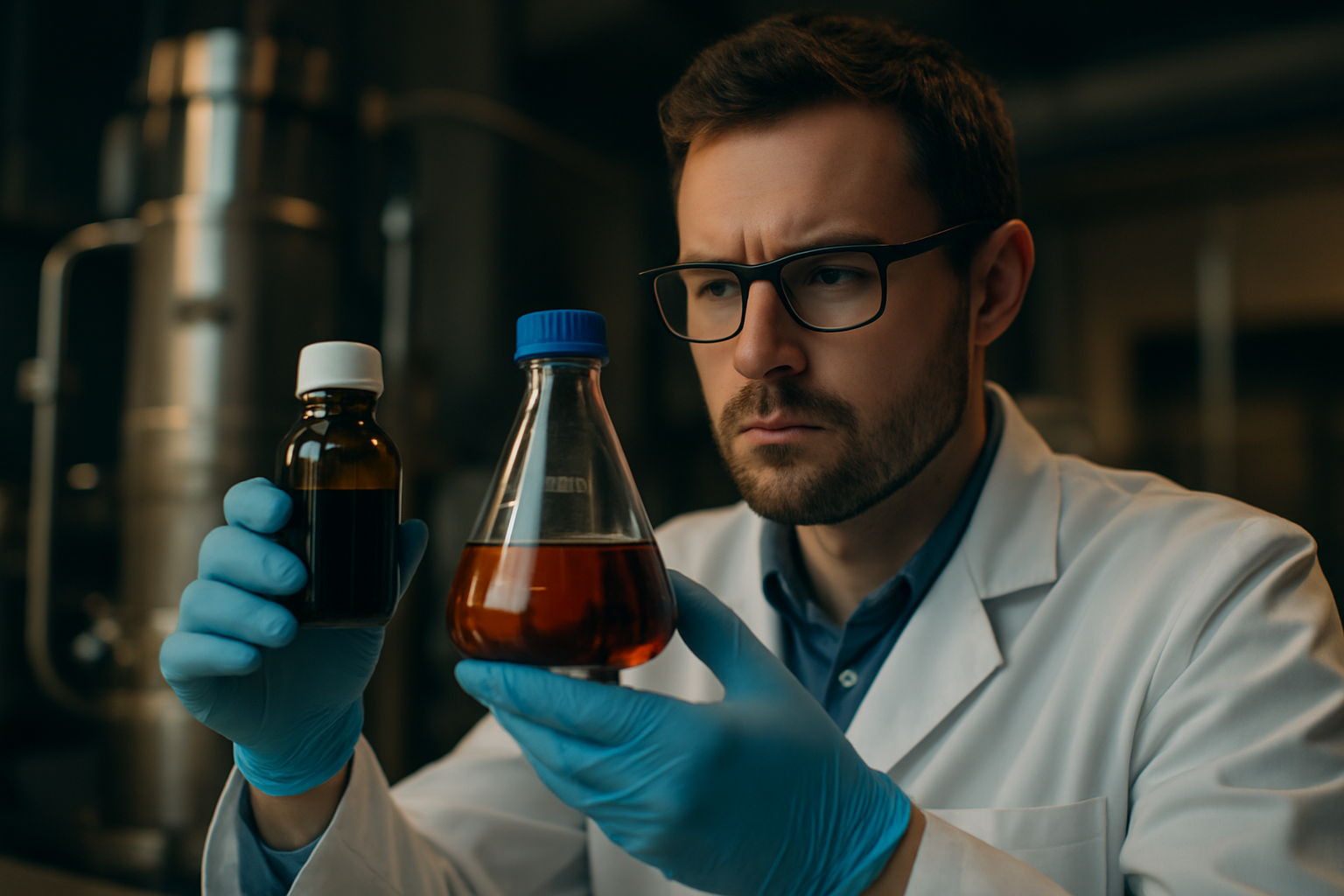How to Select the Right Chemicals for Petroleum Lab Analysis
How to Select the Right Chemicals for Petroleum Lab Analysis
If you’ve ever walked into your lab to find inconsistent results, unexplained anomalies, or frustrated analysts, the real culprit might not be your equipment. It might be a bottle of the wrong chemical sitting in your prep station.
The Hidden Cost of a Wrong Chemical
One Gulf Coast lab spent two weeks re-running tests after discovering a reagent wasn’t meeting ASTM purity. The impact? Delayed reporting, a furious upstream client, and an emergency scramble for expedited cert material. All because of a silent, invisible variable: poor chemical selection.
The High-Stakes Reality of Petroleum Lab Analysis
As a lab manager in the petroleum sector, you already live with pressure. Every sample carries real-dollar implications. A botched sulfur content trace can spark compliance issues. Subpar additives in hydrocarbon mixes can muddy ASTM D86 results. Time is tight, auditors breathe down your neck, and your team needs reliability — not chemistry surprises.
You don’t have the luxury of “close enough.” Every chemical must work, every time.
Why Most Labs Get Chemical Selection Wrong
The most common misstep? Assuming all certified chemicals are equal. They’re not. Suppliers cut corners. Labels mislead. And unless you validate each reagents’ provenance — source, handling, stabilization — you’re playing chemical roulette.
Plus, procurement teams often opt for cheaper options without consulting lab protocols. It’s not their fault — they don’t see the downstream chaos poorly curated chemicals create. You do.
What Top Labs Do Differently
High-performing petroleum labs embed chemical selection into their operational strategy. They don’t just look for MSDS files. They audit certificates of analysis. They verify batch consistency. They work with partners who understand volatility standards, hydrocarbon chain compatibility, and ISO/IEC 17025 alignment.
This is where Dream Beyond becomes invaluable. We don’t just sell lab supplies — we engineer certainty into your chemical chain.
Step-by-Step Plan to Nail Chemical Selection
Step 1: Start With the Standard
Align every chemical with the ASTM, ISO, or API test method you’re running. If you’re analyzing total aromatic content, you need reagents that match API 1311 purity. Never assume “lab-grade” meets that threshold.
Step 2: Vet the Supplier — Every Time
Request lot-specific certificates of analysis. Ask about contamination prevention protocols. Reliable partners don’t take offense — they welcome your questions.
Step 3: Document Compatibility
Some solvents react with metal containers. Others degrade over time or leach plasticizers. Know your storage timeline and container type before ordering in bulk.
Step 4: Build Your Chemical Control Matrix
Map every critical input to each test, then lock sourcing by SKU and manufacturer. If a chemical fails validation, your team instantly knows what to flag.
If your team needs help building this, we offer consulting to do it with you.
Inside a Real Lab: What Changed When They Got It Right
One Dream Beyond client, a Sweet Crude testing lab in Oklahoma, faced surging rework due to volatile additive breakdowns. After months of fire drills and quality flags, they invited us in.
We audited their solvent sourcing, identified supplier inconsistencies, and rebuilt their chemical validation map. Within 45 days, their rework dropped by 62%. Turnaround time improved. Analyst confidence returned. Their clients? Zero complaints in the next quarter.
That’s the power of getting chemical selection right.
Avoiding the Traps: Common Mistakes and How to Dodge Them
- Overreliance on Distributor Labels: Repackaged chemicals often lack purity data. Go upstream.
- Ignoring Shelf Life: Stabilizers break down. Know the degradation curve.
- Buying in Bulk Without Use Forecast: Cost savings evaporate if your reagents degrade in storage.
- Procurement Team Mismatch: Loop them into QC meetings. Education saves money.
How Dream Beyond Helps Labs Win on Consistency and Compliance

We know what’s at stake in your line of work. That’s why we only source high-purity, traceable chemicals with full compliance documentation. Our team works directly with lab managers to design selection frameworks, flag sourcing anomalies, and create chemical-control SOPs.
Whether you’re spinning sedimentation bottles or optimizing for GC-FID readings, we speak your language. And we back it with chemistry that performs under pressure.
Explore our oil & gas lab solutions to see why teams return to Dream Beyond again and again.
Conclusion: Precision is Power in Petroleum Testing
Your lab’s reputation doesn’t live in your instruments — it hinges on the smallest variables. Chemicals. Unless your team is obsessing over selection, validation, and sourcing, you’re vulnerable to surprises.
The good news? You don’t have to do this alone. Dream Beyond is ready to help.
You lead the lab. We build the foundation. Let’s precision-proof your petroleum analysis operation, starting with your chemicals.
FAQs
How do I know if a chemical meets ASTM specs?
It must come with a verifiable certificate of analysis tied to the specific ASTM method. Check for lot-level traceability and purity levels.
Can I use laboratory-grade instead of analytical-grade chemicals?
Only if performance impact is negligible — but in petroleum analysis, analytical-grade is usually mandatory for consistent results.
How often should chemical sources be audited?
At least annually, or whenever unexpected lab variation occurs. Source drift and manufacturing shifts can introduce silent variables.
FAQs
- How do I know if a chemical meets ASTM specs?
It must come with a verifiable certificate of analysis tied to the specific ASTM method. Check for lot-level traceability and purity levels. - Can I use laboratory-grade instead of analytical-grade chemicals?
Only if performance impact is negligible — but in petroleum analysis, analytical-grade is usually mandatory for consistent results. - How often should chemical sources be audited?
At least annually, or whenever unexpected lab variation occurs. Source drift and manufacturing shifts can introduce silent variables.
Suggested Internal Links
- lab-solutions
- petroleum-lab-analysis
- contact-consulting

